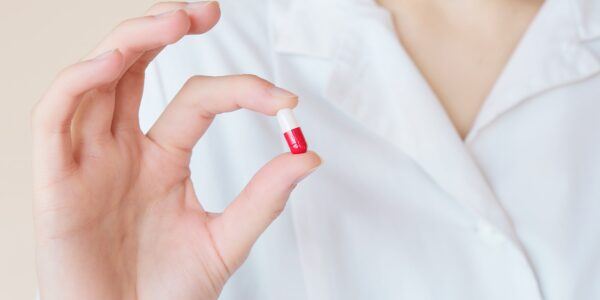The Center for Human Drug Research (CHDR) in Leiden is collaborating with BaseClear for microbiome analysis of the skin and the gut in the context of clinical trials. “BaseClear is a partner for us in with regard to technical, scientific and logistical aspects. It is a matter of complementary expertise and professional partnership.”
The CHDR is an independent research institute for early-stage clinical drug research that conducts phase I and II clinical trials on patients and healthy volunteers. One of the research areas is the pharmacological profiling of dermatological drugs, related to dermatological conditions like psoriasis, eczema and premalignant lesions.
Skin microbiome
In recent years, the skin microbiome has become a major focus in the field of dermatology. “It is becoming increasingly clear that the skin microbiome is very important and that its status can be used as an outcome measure in clinical trials of dermatological drugs,” explains Robert Rissmann, the CHDR’s research director of dermatology. Therefore, the CHDR has included skin microbiome analysis in many of its dermatological research projects. In some cases the gut microbiome analysis is included as well, especially in cases of systemic therapies.
It is becoming increasingly clear that the skin microbiome is very important and that its status can be used as an outcome measure in clinical trials of dermatological drugs
Although the analysis of the skin microbiome is similar to that of the gut microbiome, the execution of this is more challenging, since the obtained samples contain much less biomass, and thus less DNA, and are more vulnerable to contamination and differences in sampling method.
Involved in study design
The CHDR is collaborating with BaseClear for skin and gut microbiome analysis in an increasing number of research projects, currently more than ten. “BaseClear not only helps us with the microbiome analysis itself, but is a partner with regard to technical, scientific and logistical aspects,” Rissmann explains. BaseClear has been involved in these projects from the very beginning, starting with the project application. Rissmann tells: “We discuss the study design together. BaseClear thinks along with us how our research questions can be answered and which analysis techniques are the most appropriate ones in each case. We appreciate that BaseClear offers a tailored approach, where its staff members are always alert to new aspects and developments that should be taken into account. It is really important to do this at the study design stage. In clinical trials it sometimes takes more than two years before we see the first data. You don’t want to find out only then that you’ve done something wrong.”
A matter of mutual trust
Rissmann continues: “For us, it is very important to be up to date in terms of knowledge and techniques. The CHDR doesn’t have technical expertise in the area of skin microbiome analysis, but BaseClear does. In fact, it is mainly a matter of complementary expertise. We are confident that the people from BaseClear sincerely contribute ideas instead of only selling projects.”
Such a relationship of mutual trust also means that both partners are being mindful of advancements in the field that enable an improvement when it comes to the analysis being performed. Tom van den Bogert, product manager metagenomics at BaseClear notes: “When we see that a current approach, such as the bacterial profiling of samples can be improved upon, we discuss this proactively with our clients. These discussions do not only focus on the potential benefits, but also the impact that such changes may have, being mindful that technologies and analyses itself need to remain consistent throughout the trial period.” Rissmann is happy with that attitude. “In the end it is more about the relationship.”
Sampling and logistics
High-quality data hinges on a well-executed sampling and logistics. Within the various projects, BaseClear is closely involved in this. BaseClear delivers barcode-labeled tubes that allow for double-blind studies. “In our lab we don’t see any patient-related information. Based on the barcode labeling, we can automatically start the requested handlings and measurements,” explains Van den Bogert. He continues: “In the initial phase, I really focus on details in order to optimize the process. A few years ago, we optimized the sampling method in collaboration with the CHDR, leaving out a step in which the swabs underwent handling including transfer of the swab to another test tube. Now tubes only need to be opened once after sampling, when we start the DNA extraction procedure. This is typical for our way of working. Although we are satisfied with our current methods, we are always looking for possibilities for further improvements. Van den Bogert is now investigating the possibility of standardized sampling of skin microbiome via a tape strip, which could further minimize the variation introduced by the employees who do the sampling. Rissmann is surely interested in this.
 Advice on data analysis
Advice on data analysis
When all of these skin microbiome samples arrive at the BaseClear lab, they are analysed by 16S RNA based profiling, showing the bacterial part of the skin microbiome. Van den Bogert explains: “Although we also can analyse fungi and bacteriophages, we focus on the bacteria, since they are of most interest in these research projects.”
Via bioinformatics and biostatical analysis, it is possible to relate the effects on the microbiome to clinical and other aspects. BaseClear offers this as a service as well, but in this case this analysis is done by PhD students within the CHDR, which is part of their training. Rissmann adds: “We always discuss our data together with BaseClear and sometimes they give us advice about more advanced analysis techniques that we could use.”
New type of collaboration
In September 2019 the collaboration between CHDR and BaseClear will enter a new phase. Rissmann states: “Until now we always collaborated in sponsored studies that we did for pharmaceutical companies. Now we are starting a study on our own, which is investigator initiated. This will be a study on psoriasis. I expect that this will result in a different type of collaboration. Of course, many parts of the research process will be similar, but the project will offer more degrees of academic freedom, allowing us to compare for example different sampling or analysis techniques. I look forward to doing this together with the team from BaseClear.”
For more information on CHDR, visit www.chdr.nl.
More information on skin microbiome analysis: https://www.baseclear.com/human-microbiome-research/skin-microbiome-analysis/
Related items


 Advice on data analysis
Advice on data analysis

